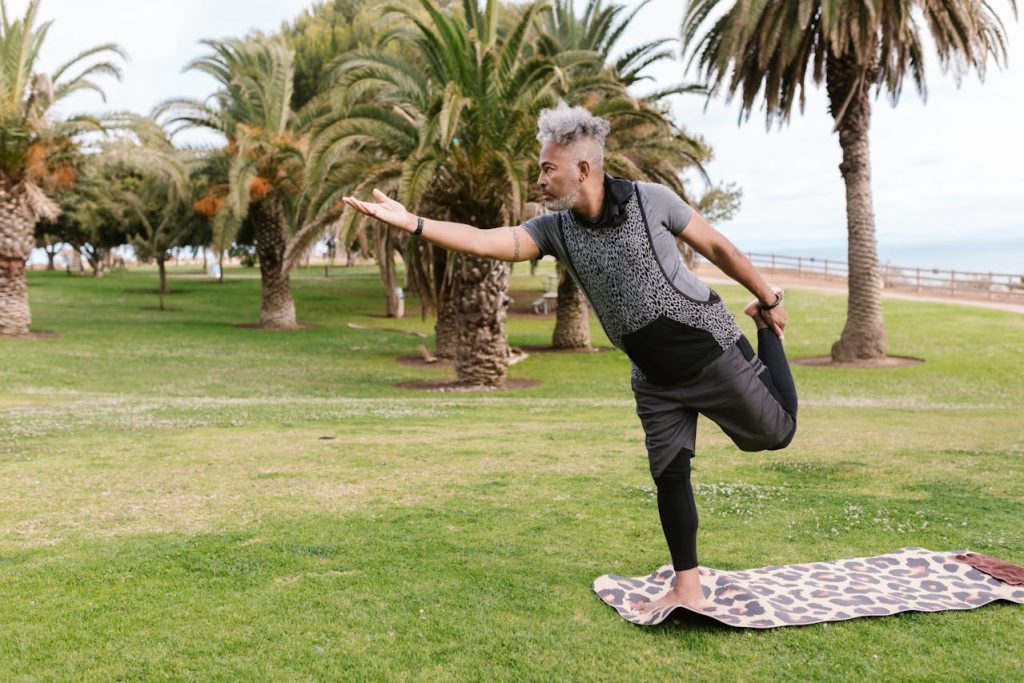More Research Shows that Yoga May Also Protect Brain Health

Anyone who has taken a yoga class knows how relaxing it can be to set aside the day’s worries and focus on breathing, gentle movements, healing stretches and guided meditation, even if just for an hour.
A growing body of research suggests the soothing powers of yoga may go further than temporarily easing the day’s stress. Yoga is emerging as a potential prescription to boost brain power, offset cognitive decline and help prevent dementia.
“The evidence behind yoga has really picked up,” said Dr Neha Gothe, an associate professor and director of the PhD in Human Movement and Rehabilitation Sciences programme at Bouvé College of Health Sciences at Northeastern University in Boston. “So far, it points toward the potential for it to protect brain health as we are aging.”
Exercise for an aging brain
Research into the health benefits of yoga – the origins of which trace back to 2500 to 5000 years ago – didn’t begin in earnest until the 2000s, when the practice began to surge in popularity in the US, Gothe said. Since then, yoga practice has been shown to have a positive influence on physical as well as mental health, with studies finding it may benefit cardiovascular function, musculoskeletal conditions and overall mental well-being.
More recently, researchers have turned their attention to yoga’s potential benefits on brain health, an area of growing interest as the population ages and the number of adults developing dementia and cognitive decline rises. In the U.S., about 1 in 5 people 65 and older are living with mild cognitive impairment, and 1 in 7 have some type of dementia. Researchers predict a doubling of new dementia cases in the U.S. over the next several decades.
While there is strong evidence that physical activity can benefit brain health and help slow cognitive decline, aging adults are not always able to reach the recommended 150 minutes of moderate-intensity exercise or 75 minutes of vigorously intense physical activity needed to reap these benefits. Federal guidelines also recommend muscle-strengthening activities at least two days a week.
What the research shows about yoga
Yoga – which combines physical movement with breath work and meditation – may offer a more accessible alternative or supplement to other types of exercise, Gothe said.
Studies have shown yoga may have a positive effect on both brain structure and function. In a 2019 analysis of the evidence, Gothe found yoga could hold promise as a means of offsetting age-related and neurodegenerative declines in several regions of the brain. And in another small study comparing yoga practitioners to age- and sex-matched controls, she found women who practiced yoga regularly had more grey matter – the part of the brain that controls memory, thought and movement – and better working memory than those who didn’t.
In some cases, the ancient practice may even be better for the brain than other types of physical activity. In another small study, Gothe found cancer survivors who practiced yoga for 12 weeks reported greater cognitive improvement than those who engaged in aerobic and stretching-toning exercises.
For people who can’t engage in more vigorous activities, it’s certainly more accessible, Gothe said.
“Yoga is just as good as any other form of physical activity, such as walking or stretching,” she said. “For individuals who may not be able to engage in those activities, especially older adults who have other conditions, such as knee pain or arthritis, yoga is a neat alternative to traditional forms of exercise and is very modifiable to accommodate an individual’s abilities.”
How does yoga help?
An explanation for yoga’s brain health benefits may be the close connection yoga forms between the mind and body.
Gothe and her colleagues found the cognitive benefits of yoga may stem from limiting prolonged exposure to stress and inflammation, improving stress regulation and helping the brain communicate better with the body to work more efficiently.
“We have a lot of evidence at this point telling a cohesive story about a mind-body connection with brain health,” said Dr Helen Lavretsky, a professor of psychiatry in-residence and director of integrative psychiatry at the David Geffen School of Medicine at the University of California, Los Angeles.
Lavretsky has led numerous studies on the cognitive benefits of yoga, looking specifically at Kundalini yoga. This type of yoga blends physical postures with meditation and breathing techniques that focus on relaxation, healing and self-awareness.
In several studies, Lavretsky’s team compared Kundalini yoga to memory enhancement training in postmenopausal women: those who practised yoga experienced greater improvements in memory and cognitive function, including executive function, and were able to better prevent grey matter atrophy.
In a separate analysis of published research, Lavretsky looked more broadly at mind-body practices, including yoga and meditation. The review suggested that these practices improved brain function because they were targeting the area of the brain involved in regulating attention, emotional control, mood and cognition.
“Yoga and other mind-body therapies have an effect on stress reduction and other things that underlie brain health,” Lavretsky said. “Our research shows they are well equipped to reduce inflammation, stress, improve sleep and mental health.”
Making yoga a regular practice
How much and what type of yoga is needed to accrue these benefits remains unclear.
While Lavretsky’s studies involved Kundalini yoga, Gothe said her studies mostly involved Hatha yoga, the most widely practiced form. Both blend physical postures with breathing exercises, while Kundalini incorporates more spiritual and meditation elements.
Most studies involve at least eight weeks of yoga, with hourlong classes at least two or three times a week, Gothe said. But “there are no rigorous dose-response studies. So we don’t know exactly what dose is necessary to get an improvement in cognitive performance.”
Even so, yoga shouldn’t be considered a quick fix, Gothe said. To maintain benefits, it’s important to keep up the practice.
“It is a ‘use it or lose it’ phenomena,” she said. “If you continue practicing, you will continue to see improvement. But if you stop, you go back to square one.”
The good news is it’s never too late to begin accruing those benefits, Lavretsky said. She encourages people to begin at a young age, so they have a tool for stress management whenever it’s needed.
“The benefit of starting earlier is that it becomes a lifelong skill,” she said. “But yoga has benefits no matter what your age is.”
Source: American Heart Association




